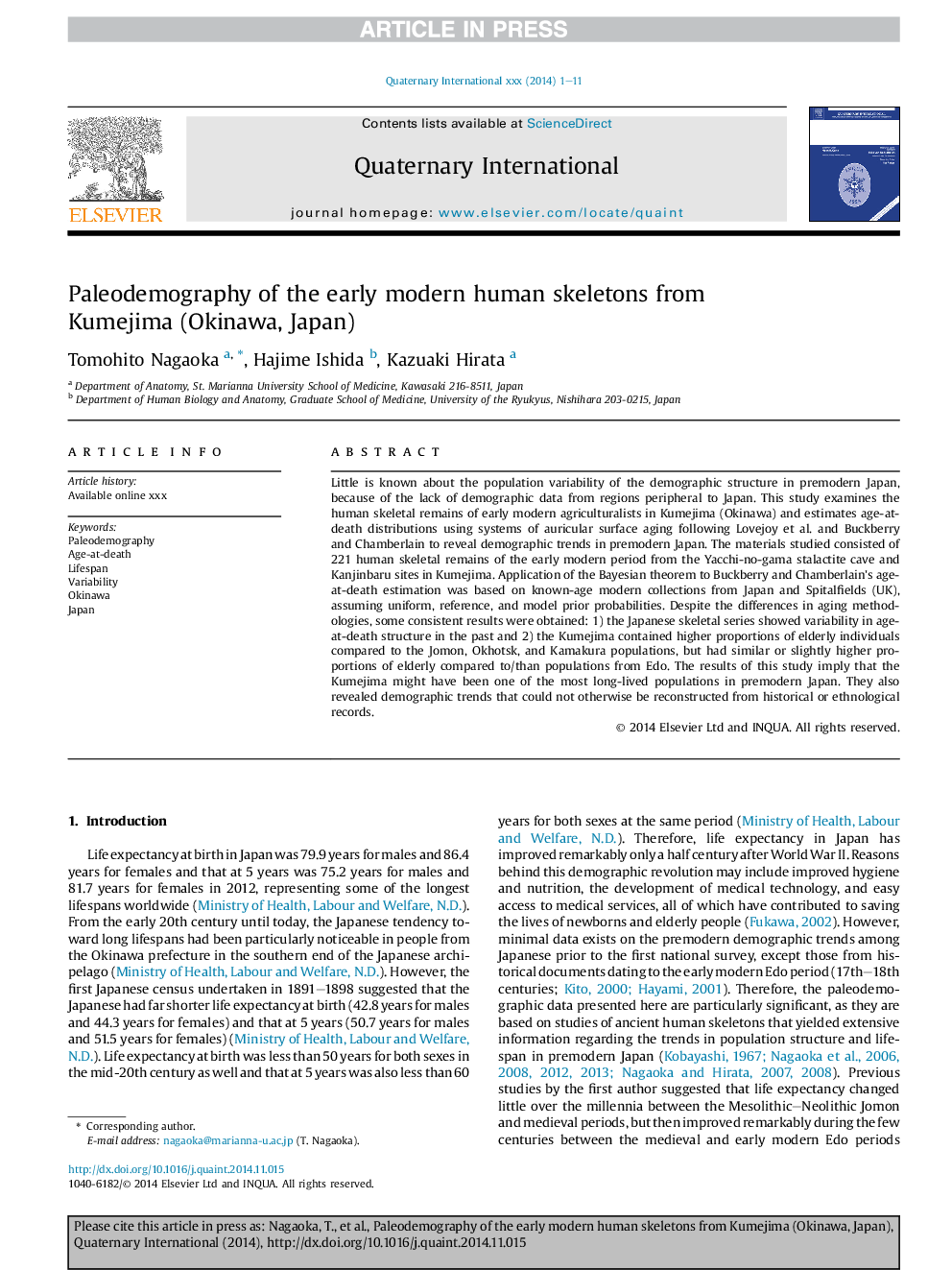| Article ID | Journal | Published Year | Pages | File Type |
|---|---|---|---|---|
| 10500896 | Quaternary International | 2016 | 11 Pages |
Abstract
Little is known about the population variability of the demographic structure in premodern Japan, because of the lack of demographic data from regions peripheral to Japan. This study examines the human skeletal remains of early modern agriculturalists in Kumejima (Okinawa) and estimates age-at-death distributions using systems of auricular surface aging following Lovejoy et al. and Buckberry and Chamberlain to reveal demographic trends in premodern Japan. The materials studied consisted of 221 human skeletal remains of the early modern period from the Yacchi-no-gama stalactite cave and Kanjinbaru sites in Kumejima. Application of the Bayesian theorem to Buckberry and Chamberlain's age-at-death estimation was based on known-age modern collections from Japan and Spitalfields (UK), assuming uniform, reference, and model prior probabilities. Despite the differences in aging methodologies, some consistent results were obtained: 1) the Japanese skeletal series showed variability in age-at-death structure in the past and 2) the Kumejima contained higher proportions of elderly individuals compared to the Jomon, Okhotsk, and Kamakura populations, but had similar or slightly higher proportions of elderly compared to/than populations from Edo. The results of this study imply that the Kumejima might have been one of the most long-lived populations in premodern Japan. They also revealed demographic trends that could not otherwise be reconstructed from historical or ethnological records.
Related Topics
Physical Sciences and Engineering
Earth and Planetary Sciences
Geology
Authors
Tomohito Nagaoka, Hajime Ishida, Kazuaki Hirata,
